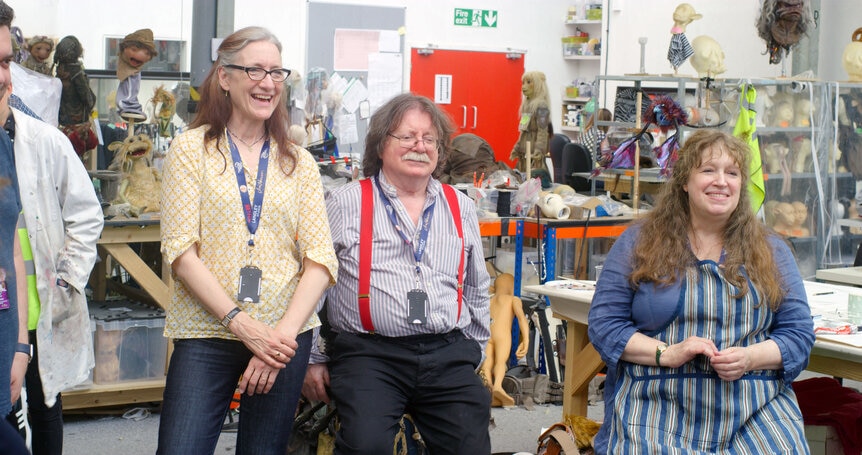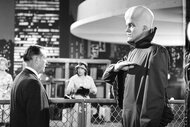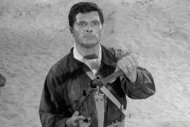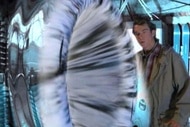Create a free profile to get unlimited access to exclusive videos, sweepstakes, and more!
Emmy Contenders: Lisa Henson explains what's next for Netflix's Dark Crystal show & taking inspiration from Star Wars
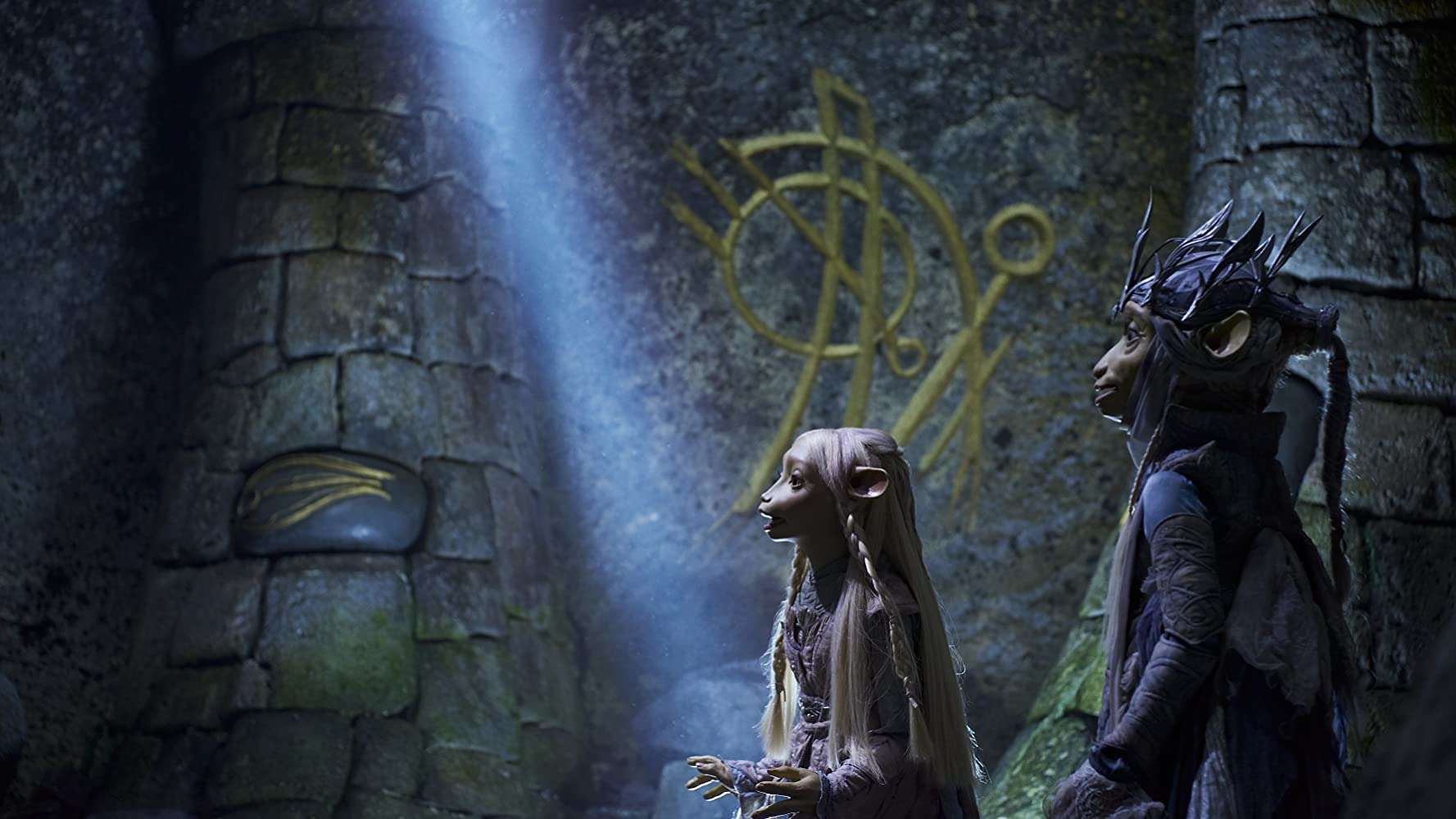
Welcome to Emmy Contenders 2020. This month, SYFY WIRE is speaking to some of the actors and artisans whose work earned them Emmy nominations this year. Today we speak with Lisa Henson, the Emmy-nominated executive producer of Netflix’s The Dark Crystal: Age of Resistance.
The journey from the cult classic film The Dark Crystal to its prequel series, The Dark Crystal: Age of Resistance, has taken nearly 35 years. But now the future of this live-action return to the world of Thra has been put in jeopardy — after just one season — by the coronavirus pandemic. The Jim Henson Company, the producer of the series, received a federal Payroll Protection Program (PPP) bailout (approximately $2 million) in order to retain its 75-person staff after live-action productions and the Jim Henson Creature Shop were shut down. New Thra stories have continued to appear over the years in book and graphic novel form, but the fate of the Age of Resistance series remains uncertain.
Last month, Age of Resistance nabbed a 2020 Emmy nomination for Outstanding Children's Program. Now, Lisa Henson, CEO of the Jim Henson Company and guardian of all things Thra, chats with SYFY WIRE about getting back to work, and the challenges of creating this world — among them, working with puppets in confined spaces.
Given the state of the world, do you look back at The Dark Crystal: Age of Resistance and see new relevance? Especially when you have certain people making statements like they think it’s OK if older, at-risk people are sacrificed so others can live. It’s not exactly draining their essence, but it’s the same attitude...
Yes, it’s true. It’s a very alien-looking and alien-feeling world, but we wanted it to feel emotionally relevant. We have a very tenuous environmental situation in our world, as well as a lot of inequity, and we really did want to reflect that in our fantasy world. We have the Darkness creeping in, and it feels like Darkness has arrived in the human world now. The carelessness for life, that sort of self-interest business of the Skeksis...
The Skeksis are pretty ruthless. [Laughs.] They’ve always been the most amazing villains. They were great villains in the '80s, and bringing them back, we hardly had to dial them up at all. They were already so scary. We just added to their numbers and created some new Skeksis with some new aspects to their villainy. But they’ve always been the most fun characters.
You majored in folklore and mythology. Do you ever contribute to the lore of Thra?
Hmm. I don’t want to diminish my studies, but the goal is really to be as weird as possible. We actually steer away from story developments that might feel like archetypal tropes and try to do it [in] a more unpredictable way. We’re aware that when people watch Dark Crystal, it’s not our world set in an alternate fantasy, like how Game of Thrones, for instance, is more like human reality. This should feel like you’re transported to a different place with different rules. There’s a mushy line between animate and inanimate objects. And it’s hard to figure out which characters are good or bad because they don’t look like what is conventionally heroic or unheroic. So the premium is on originality, rather than treading the folkloric familiar.
But I guess everything that I do is relevant to those folkloric studies. When people had folklore as their only kind of storytelling, it was for adults and kids alike. That’s why when people looked at the Grimm's fairy tales, they were shocked that it was violent and scary. Bruno Bettelheim wrote in The Uses of Enchantment and reminded everybody that those stories were not really for children. So I guess Grimm fairy tales were the HBO of the day!
Similarly, The Dark Crystal: Age of Resistance, nominated in the children’s series category, transcends that age group.
Yeah. And they have pretty sophisticated shows in that category. We did make the show with children’s viewing in mind, but we wanted the whole family to be able to watch it. We would joke around and say, “It’s like Game of Thrones, but minus all the sex.” [Laughs.] We were somewhat inspired by Avatar: The Last Airbender. They went so deep into the mythology and it was so complex, it was rewarding for adults to watch it, too. We were aiming for that level of complexity.
When I last spoke with co-creators Will Matthews and Jeff Addiss, they mentioned that Season 1 covered probably about 60 percent of their original pitch. I know the pandemic complicates things, but what does that mean for Season 2? Is that remaining 40 percent something that could become Season 2?
Well, the interesting thing about Dark Crystal, it’s like a mini Star Wars-type franchise for us because even looking at the first film, you’re talking about what happened a thousand trine before. We jump back into that time, but we also know what’s going to happen in the future. And we think about stories that were going on at the same time, but in other parts of Thra. We have a graphic novel series that is set in a different world of the Firelings in Mithra, down at the center of the world. So we’ve been thinking of Thra as a world that has a reality to it in the past, the present, the future, and even inside the world. There is even an astral aspect to it, because of Aughra’s astral travels in her observatory. We can explore this world from all different sides.
One of the ways this has happened is with the graphic novels that extend the world. I think Netflix looked at what we were doing and they could see this was a pretty broad canvas. We didn’t have to remake Dark Crystal — we could just branch out.
And it’s been pretty rewarding to explore all the different stories taking place in the Dark Crystal world. We’ve just published three prequel stories about three of the main characters from the series, so there are graphic novels now about the Vapra queen Mayrin in her youth, a prequel story about Hup and how he came to be who he is when you meet him, and a prequel story about Rian’s father Ordon, as the great hero of the Stone-in-the-Wood.
Would you look to incorporate those kinds of stories in television? Or would you continue where Season 1 left off?
We don’t actually know if we did more production whether it would be the continuation of this story, or if it would be about the Firelings, or if it would be another story. It’s really rich material. And we’re not exactly sure where we would go. It’s true that Jeff and Will did a much longer story, and that when they started to write them into scripts, we didn’t want them to be quite as plot-heavy. We wanted to slow the plot down a little bit and get to know the characters more, which meant that we only got through the sixth of their 13 stories. They had originally pitched 13, and then Netflix ordered 10, so it was already shortened, and then we shortened it further.
I think we found a really satisfying ending with the [Second] Battle of Stone-in-the-Wood and defeating the Hunter. We wanted to make sure that we had a special villain that we could bring down in the series, because, being a prequel, a lot of them survived, and you know what will happen later with essentially the genocide of the Gelflings. We needed to find a very satisfying and positive conclusion before launching into probably a lot more Gelfling bloodshed.
Pre-pandemic, Jeff and Will thought the second season might focus on prophecy. I was trying to figure out if the pandemic itself — forcing productions to go on pause, requiring new safety protocols when you resume — might actually influence story and which characters you want to feature. Puppeteering has different considerations.
Yeah, that’s true. [Laughs] We could shift over to animation or something...
Would you? You considered it before...
We could. But I wouldn’t want to do these characters in animation right now, because people love characters like Brea as a puppet. And we have lots of other stories in the world of Dark Crystal, including the creation myth, which has been interesting to us as a subject for animation.
But as long as you’re doing puppetry, it’s still a live-action shoot. And the COVID concerns are perhaps even multiplied because we have such large crews. It’s interesting because we like to say that The Dark Crystal: Age of Resistance was the biggest puppet production in history. It looks delicate, it looks beautiful, but it’s an incredibly large endeavor. You have no idea watching the finished show just how big it was. And to just put that up again would be a huge thing. I mean, for a puppet to jump from the carriage to the wheel of the carriage, which is sort of a typical stunt in the human world, that sequence is just amazing.
Some puppets, such as the Skeksis and the Mystics, require more than one performer to be inside, and that certainly complicates things now.
[Laughs.] We actually downplayed how hard it was to do the Mystics in the behind-the-scenes, but I knew from the first movie that the Mystics were very, very difficult. The performers inside the Mystics, they talked about the Zen place they had to go to, to withstand the pain and discomfort of holding their arms in that position, with that amount of weight on their arms, which was the head and neck of the Mystic. When a big strapping guy talked about how hard it was, that just kind of confirmed our instinct that we wanted to be very sparing with the Mystics in the series.
So we decided that the Mystics had taken a kind of secretive route. Once they split from the Skeksis, the Skeksis couldn’t wait to be in charge of everything, and the Mystics really retreated like hermits. The Gelflings are almost unaware that the Mystics exist. They’ve become almost mythical, and they’re barely around. So using them sparingly was interesting, story-wise, but they were almost impossible to perform with.
What puppets are easier to do with safety protocols? What could we see more of it, if that were the main consideration?
The Podlings, for sure. The Podlings are basically Muppets, and they’re funny. They bop around with puppet-y movements. Everybody’s favorite scenes to perform were Podlings having a party, or a Podling taking a bath. That’s just complete silliness. The crowd favorites are actually all really easy to do.
You could even do a quarantine one-off episode of just the Podlings.
That’s so funny! A Podling pop-out episode. We’ll pass that idea on.
But yeah, puppets are very, very physical, and we can’t do a lot of what we’ve done in the past. They can’t pass the puppets between each other. They can’t share a puppet. And we’re very nervous about having puppeteers on top of each other. But we’re not even at the place where we can contemplate a big production. We’re taking it real slow.
Is that also the case for the Labyrinth sequel? How is that going?
It’s just being written right now. Scott Derrickson and a writer are working on the script, but they’re very excited.
Have you seen the fan campaigns to get Tilda Swinton to play the Goblin King?
I’ve read that. There are other fan campaigns, too, and not everyone can be happy. We’ll see how it goes.
Well, at least you have one of the original cast members at your disposal, because Toby Froud, who played baby Toby, now works on Dark Crystal...
Oh, that’s so funny! I thought you were going to say Jennifer Connelly. You’re right. But Toby’s not an actor, so I don’t think we’ll bring him back as a grown-up Toby! It does give us a constant reminder of how old baby Toby would be today.
